7 Popular Mortgage Terms Decoded
< Back to Articles | Time to Read: 5 minutes
Let’s make sense of a few confusing mortgage terms you may not be so sure about. We get it, you can always ask Siri or Alexa, type in a question online, or even phone a friend for help. But, home loans are kind of our thing here at Churchill Mortgage so we thought we’d get down to the nitty gritty on some of these popular terms. This insight will help you look like a mortgage rock star … and ultimately help get you a mortgage you won’t regret.
#1 Down Payment- This is exciting…you’ve managed to save up some money for down payment! But what does that really mean? Ultimately, you’re putting cash up front on the final price of your home before your mortgage starts. Putting 20% down will help you avoid paying mortgage insurance but it doesn’t mean you need to put all your cash in hand toward your down payment. Anywhere from 3-10% down could be your best bet. Talk to your Home Loan Specialist to see what works best for your situation.
#2 Closing Costs- When you’re buying a house or getting a mortgage refinance, closing costs are part of the contract. The average home buyer pays about 2-5% of the loan amount in closing fees. So, what’s included in closing costs? Usually you’ll have a variety of fees such as: your application fee, attorney’s fees, administrative or processing fees, insurance fees, property taxes, and expenses from the title company.
#3 Interest Rate- This is the cost you’ll pay each year to borrow the money on your home loan. In this case, the lower the interest rate percentage, the more you’ll save over the life of your loan (which is a good thing, of course). Many homeowners choose to “lock” their interest rates 60-90 days before closing on their home loan to avoid potentially rising rates.
—Find out how you can find the truth about loan quotes—
#4 Escrow- When you purchase, build, or refinance a home, an escrow account can be set up to pay your property taxes and insurance premiums for you. A part of your monthly mortgage payment will go toward this account. Each year, the escrow account will be analyzed to determine any changes in what is owed for property taxes and insurance payments.
#5 Equity- The easiest way to understand home equity is start with your home’s value and subtract the amount that you owe on your mortgage. Equity can increase with a healthy real estate market, home improvements, and general upkeep. With most mortgages, the more you pay on your home loan, the quicker your equity builds. Remember, having more equity is a good thing!
#6 Homeowner’s Insurance- Just like you need insurance for your car, you also need it for your home. You may want to get several quotes from various insurance companies to get the best rate for your policy. Your rates are usually based on when the home was built, where the home is located, square footage, etc. It’s recommended you review your policy every few years to coverage any changes that need to be made.
#7 Amortization- This is the process of spreading out a home loan into a series of fixed monthly payments over a period of time. Your total payment remains the same but your payment is made up of parts of your mortgage that may change over time. A portion of each payment will include the interest costs and your loan principal (or your mortgage balance). Amortized loans are designed to be paid off over a set period of time (i.e. 15, 20, or 30 years).
These are just a few mortgage terms to wrap your head around, but if you have additional questions regarding loan products, mortgage insurance, or other terms not covered here, please contact a Churchill Home Loan Specialist.




